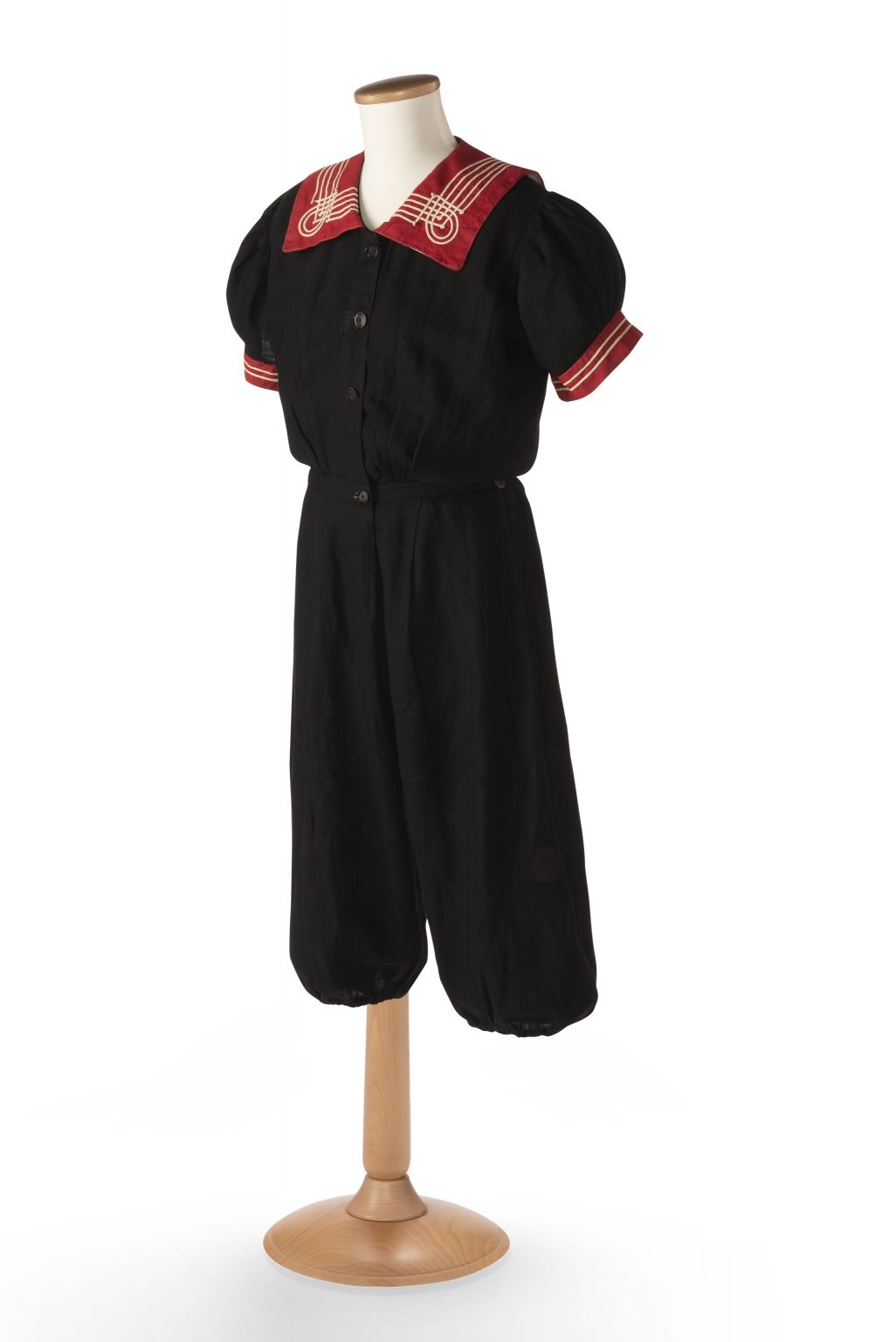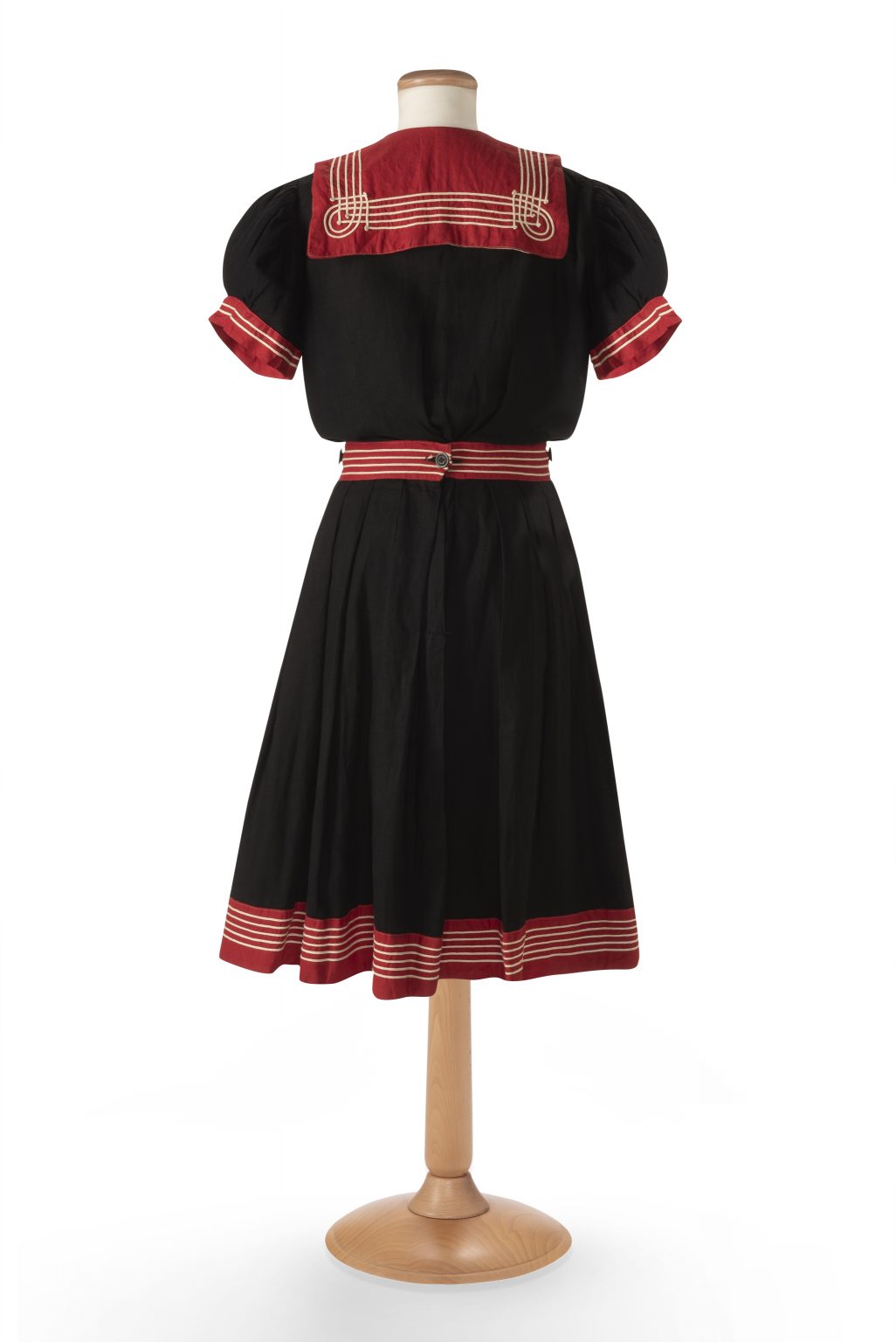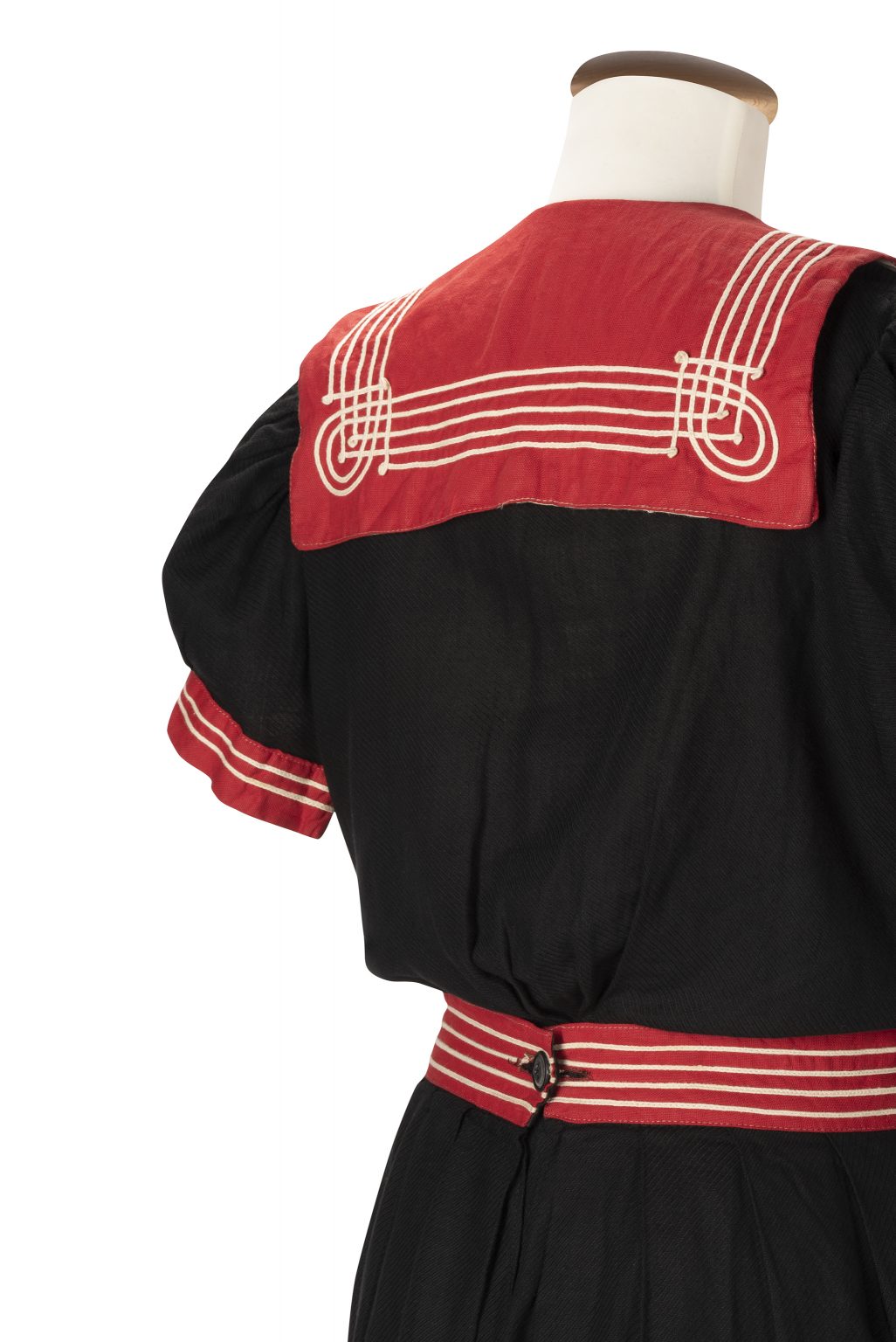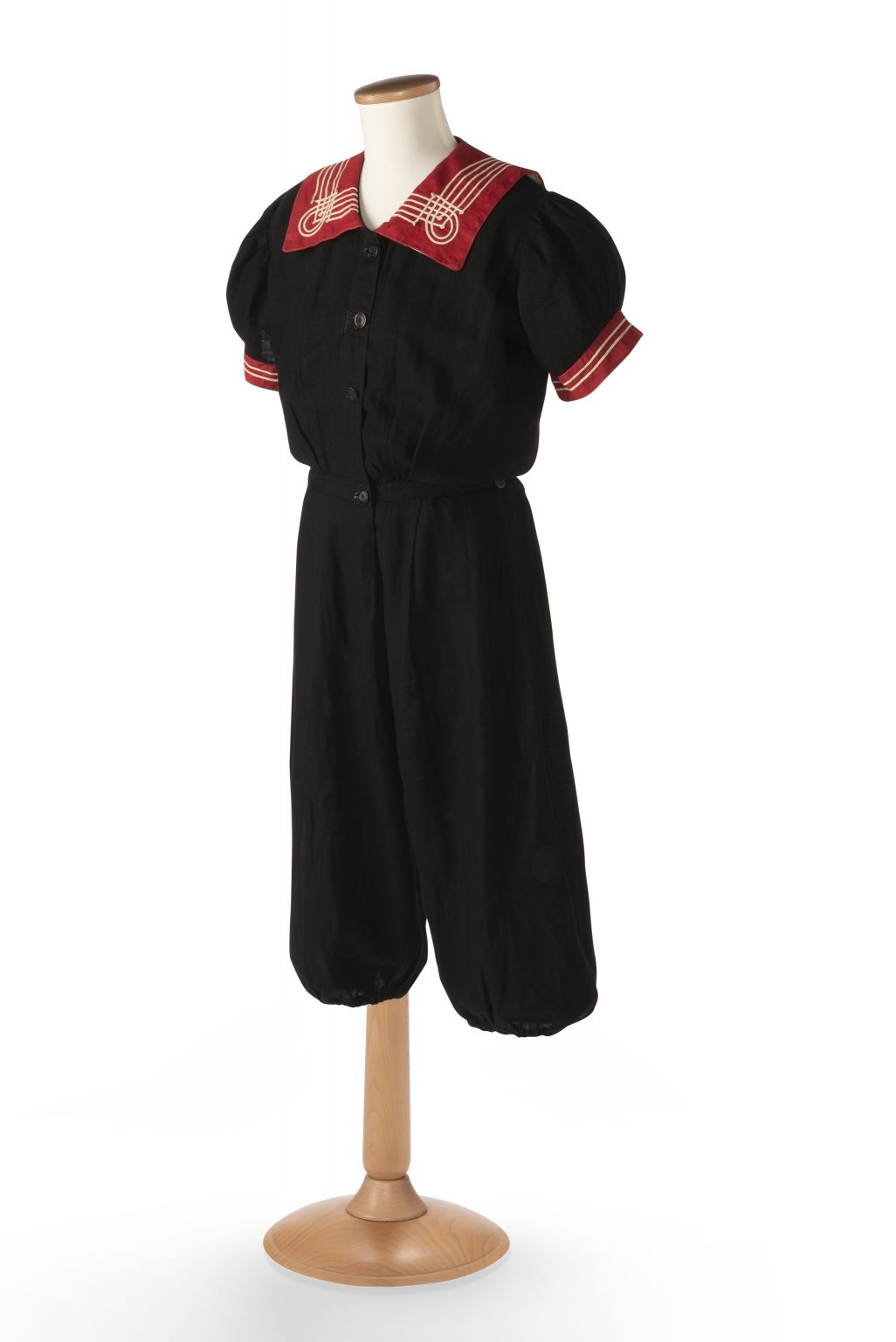
Swim suit
Black chevron wool bathing costume with short puffed sleeves and blouson legs, worn with a matching flared skirt attached at the waist with buttons, decorated with details in red cotton canvas and white cord embroidery, circa 1900 - 1910, Camilla Colombo Collection
Details



Historical context
Sport 1900-1935
At the beginning of the 20th century, few women practiced sports as it was a luxury reserved for the wealthy who could afford the right equipment and had leisure time at their disposal. Croquet, tennis, horse riding and swimming were most popular, but the clothes women wore for these sports were still very similar to their everyday wear. It is no coincidence that, during the 1914 American Olympics, the Olympic Committee was against women’s athletics competitions, except for sports where long skirts could be worn. The long-awaited change came in the 1920s when fashions placed a new emphasis on women’s athletic bodies and more women began to practice a range of sports. A revolution took place at Wimbledon where the French tennis
player, Suzanne Lenglen, became an international trendsetter as she brought the flapper style of the decade and freedom of movement to the court.
The Italian Women’s Athletics Federation was founded in Italy in 1923. Although it had been compulsory in
Italy for girls to be taught educational gymnastics; in school since 1878 , it was with the advent of the Fascist regime that women in sport began to be taken seriously. Sportswomen were admired and supported by Fascist intellectuals who considered them important for the growth of the state. However, while a few exceptional female athletes were encouraged to bring prestige to the regime on an international level, a basic physical education was believed to be enough for the majority of women.
Fashion
Women and swimming
Bathing suit fashions began to flourish in the 19th century thanks to the rise in popularity of communal swimming baths. As the first thought was for safeguarding modesty, the swimming costume had little regard for function or the comfort of the wearer, especially for women who wore an outfit composed of a cotton or wool dress, drawers and stockings. Although cumbersome and hardly practical, it was liberating as it provided a welcome change from the corset and petticoats of everyday dress. This fashion persisted until 1907, when it was challenged by Australian swimmer Annette Kellerman who introduced the tight-fitting one-piece swimming costume and was arrested for indecency. Nonetheless, the style gained in popularity and in 1912 was adopted by the first ever Olympic female swimmers.